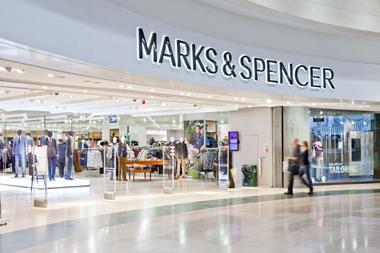IN THE NEWS
Christmas trading disproved analysts’ fears of the worst Christmas in 25 years, as private companies from all sectors revealed strong trading figures for the festive period.
Verdict forecast that, for the second year running, retailers would face another £10 billion increase in costs, piling more pressure on them to battle for profitability.
Music Zone was one of the first victims of poor Christmas trading. The 104-store chain went into administration on January 3.
Speculation was rife about Woolworths’ future profitability, as like-for-likes at the retailer fell 4.6 per cent. The retailer’s main chain was expected to lose as much as£10 million in 2007.
Stuart Rose finally uttered the “R” word when he announced a long-awaited confirmation of Marks & Spencer’s recovery. As one of the big winners of the festive season, the retailer’s like-for-likes were up 5.6 per cent.
Retail Week revealed that Argos was to expand into India – its first overseas venture for a decade.
Retail Week revealed that H&M’s new premium fascia was to be named Cos, with its first UK store opening on London’s Regent Street at Easter.
The Competition Commission’s Emerging Thinking report on grocers largely cleared supermarkets of many of the criticisms levelled against them.
Tesco chief executive Sir Terry Leahy unveiled a raft of green initiatives, hot on the heels of Marks & Spencer’s Plan A scheme.
George at Asda geared up for massive international expansion after hiring a new UK management team to free up global managing director Angela Spindler.
B&Q struck a deal with a major landlord to switch six of its large-format stores to monthly rental payments in advance, instead of quarterly. This was the first time the retailer achieved monthly rents on existing leases.
HMV announced that it achieved a threefold increase in web site traffic in the 2006 festive period at minimal cost. At its peak, the system was handling 500 search and browsing queries a second.
STORE OF THE MONTH
Bikehut,Brighton
This is a bit of a cheat because Bikehut, the indie lookalike format from Halfords, opened at the end of 2006. But, given that retailers tend to concentrate on clearing the decks at this time of year, it is worth noting this as one of the more significant developments that preceded it.
Bikehut, which makes no reference to Halfords, has about 400 different bicycles and feels like a competitor to independent cycle shops such as Evans and Condor. This store has a wide variety of branded choice and is indicative of how the big retailers are taking note of the way the independent sector does things, then producing passable copies.
ON THE MOVE
New Look appointed Guy Lister as director of marketing. He left River Island, where he was director of marketing and international development.
Gap chief executive officer Paul Pressler resigned from the company and board with immediate effect, following more than two years of sliding sales at the group.
Faith recruited Steven Swaby to the new position of brand director.
Matalan retail director Craig McGregor and head of homewares Julian Grindey left, following founder John Hargreaves’ buy-back of the business.
THE MAN WITH THE PLAN
Talk about a New Year’s resolution. In January, Marks & Spencer chief executive Stuart Rose kick-started the year with the news that M&S was to spend£200 million over five years on a “Plan A” – the wide-ranging eco drive that would change its operations “beyond recognition”. Why Plan A? “Because there is no plan B,” as its in-store marketing keeps telling us.
The retailer called upon the advisory services of green legend Jonathan Porritt to put together a 100-point plan, the most radical green overhaul that the retail sector had ever seen. It included transforming the business into a carbon-neutral operation, using unsold out-of-date food as a source of recyclable energy and sending zero waste to landfill.
Rose stressed that, from an environmental point of view, “there is no alternative”, but was also candid about the fact that the intention was not solely to benefit the environment. Such a public, committed display of greenness would also enable M&S to differentiate itself from the competition, “rather than just going down the bog-standard supermarket tactic of all pretending we’re reducing prices by£70 million,” he said.
And, after all, if there were no competitive advantage to such a plan, there would have been no point in investing£200 million in it – and the scale of Plan A and M&S’s evident commitment to it meant that even the notoriously hard-to-please sustainability campaigners were gushing in their praise.
M&S’s green agenda certainly raised the bar. It had stolen the limelight in terms of positive PR and its competitors were rushing to catch up. Later that month, Tesco did its best to steal M&S’s thunder with Sir Terry Leahy’s raft of green initiatives. Tesco’s plans included halving the price of energy-efficient light bulbs and introducing improved energy-efficient labelling. Like M&S, it also planned to implement carbon labelling on air-freighted products.
Largely thanks to Plan A, the competitive battle to be green has certainly gone up a gear and, providing that retailers fulfil their promises, that can only be a good thing.


























No comments yet